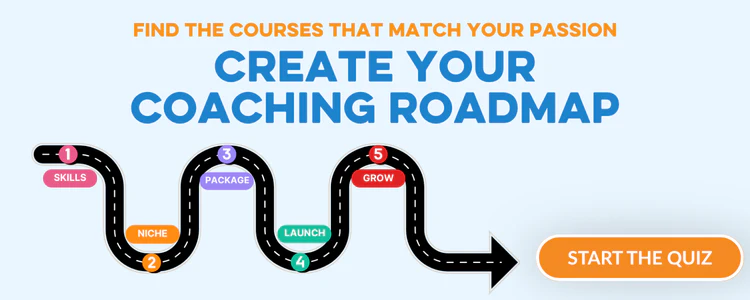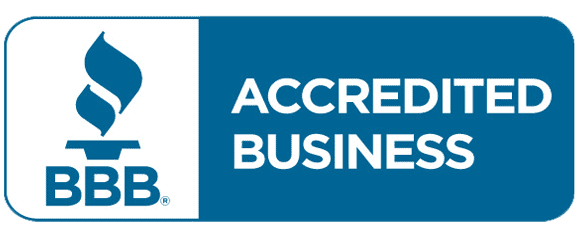Feeling like a fraud? You’re not alone. Imposter syndrome haunts even the most accomplished individuals, and as a coach for imposter syndrome, you hold the power to transform lives. Guiding clients to rediscover their self-worth and embrace their authentic selves is not just rewarding—it’s essential.
In this blog post, we’ll dive into the heart of imposter syndrome coaching, exploring seven empowering steps to boost confidence. Whether you’re a seasoned coach or new to the field, these insights will help you profoundly impact your clients’ lives. Let’s embark on this journey together to empower, uplift, and inspire confidence like never before.
Step 1: Acknowledge and Normalize Feelings
What it Means:
The first step in imposter syndrome coaching is helping clients recognize and accept their feelings of inadequacy. It’s crucial to let them know that such feelings are common and normal.
Why it Matters:
Accepting these emotions is the foundation for change. By acknowledging imposter feelings, clients begin to see them as temporary and conquerable rather than innate truths.
Practical Examples:
Encourage clients to journal their thoughts and emotions when imposter feelings arise. Have open discussions about famous figures who have openly struggled with similar feelings.
Why it Works:
From a psychological perspective, acknowledging feelings reduces their power. As clients realize they are not alone in their experiences, it erodes the isolation and shame that feed imposter syndrome.
Step 2: Identify Core Beliefs
What it Means:
Dig deeper into the underlying beliefs that fuel the imposter syndrome. These often include negative self-perceptions such as “I’m not good enough” or “I don’t deserve success.”
Why it Matters:
Addressing core beliefs allows clients to pinpoint the roots of their insecurities, a critical step for lasting change and personal growth.
Practical Examples:
Work with clients to list their negative beliefs and counter them with evidence-based affirmations. Introduce cognitive-behavioral techniques that challenge and reframe these beliefs.
Why it Works:
Psychologically, identifying and transforming core beliefs disrupts negative thought patterns, paving the way for healthier self-perceptions and improved self-esteem.
Step 3: Foster Self-Compassion
What it Means:
Teach clients to treat themselves with kindness and understanding, especially when they stumble or face challenges. Encourage them to speak to themselves as they would to a dear friend.
Why it Matters:
Self-compassion alleviates the harsh self-criticism that exacerbates imposter feelings. It’s a powerful tool for emotional resilience and sustained confidence.
Practical Examples:
Guide clients through self-compassion meditations or exercises. Encourage them to regularly reflect on their achievements and acknowledge their efforts.
Why it Works:
By fostering self-compassion, clients create a more nurturing internal environment. This shift enables them to recover from setbacks more swiftly and view themselves more positively.
Step 4: Celebrate Strengths and Achievements
What it Means:
Guide clients to regularly acknowledge and celebrate their own strengths and accomplishments, no matter how small they may seem.
Why it Matters:
Recognizing achievements helps rebuild self-esteem and counters the persistent negative narrative that many with imposter syndrome carry.
Practical Examples:
Create a “success journal” where clients document daily wins and positive feedback. Encourage them to revisit this journal whenever self-doubt creeps in.
Why it Works:
Psychologically, focusing on strengths reorients the brain towards positivity and confidence. Over time, this practice helps cement a more balanced and realistic self-view.
Step 5: Set Realistic Goals
What it Means:
Help clients establish achievable, tangible goals that reflect their current capabilities and align with their personal values and aspirations.
Why it Matters:
Setting realistic goals prevents overwhelm and burnout. It provides clients with clear, manageable steps towards growth, fostering a sense of progress and control.
Practical Examples:
Work with clients to break down larger goals into smaller, actionable steps. Celebrate each milestone as they hit these smaller targets.
Why it Works:
From a psychological standpoint, goal-setting provides motivation and direction. Reaching even small goals triggers the reward centers in the brain, reinforcing a sense of competence and achievement.
Step 6: Build a Support Network
What it Means:
Encourage clients to connect with others who understand their experiences and can offer support, encouragement, and guidance.
Why it Matters:
A supportive community can offer perspective, decrease feelings of isolation, and provide encouragement during challenging times.
Practical Examples:
Suggest joining professional groups, support forums, or peer mentorship programs. Encourage open conversations with trusted friends or colleagues about imposter feelings.
Why it Works:
Psychologically, community support counteracts isolation and provides a platform for shared experiences and learning. It helps clients feel validated and understood, which is crucial for their self-assurance.
Step 7: Embrace Lifelong Learning
What it Means:
Encourage clients to adopt a mindset of continual growth and development, viewing learning as an ongoing journey rather than a destination.
Why it Matters:
This perspective reduces the fear of being “found out” as it frames challenges and knowledge gaps as natural aspects of growth rather than failures.
Practical Examples:
Guide clients to explore new skills or interests that excite them. Encourage taking courses or workshops that enhance their knowledge and confidence.
Why it Works:
A growth mindset, rooted in psychological research, fosters resilience and adaptability. Embracing lifelong learning alleviates the pressure of perfection and helps clients enjoy the process of becoming.
Incorporating these empowering steps into your coaching practice can help transform imposter syndrome from a crippling burden into a catalyst for growth and self-discovery. Together, let’s empower others to embrace their true potential and thrive.
Wrap-Up: Embracing Your Journey
As you reflect on your own experiences with imposter syndrome, consider where you are on your journey toward self-acceptance and confidence. Remember, these feelings don’t define you—they’re simply stepping stones on the path to self-discovery and empowerment.
Challenge for Readers:
This week, take one actionable step toward overcoming self-doubt. Whether it’s starting a success journal or reaching out to a supportive friend, commit to a small action that moves you closer to embracing your authentic self.
If you’re inspired to help others conquer imposter syndrome, consider deepening your skills with the Confidence Life Coach Certification. Learn how to empower individuals to transform self-doubt into self-belief.
Together, we can create a world where everyone confidently embraces their full potential.








